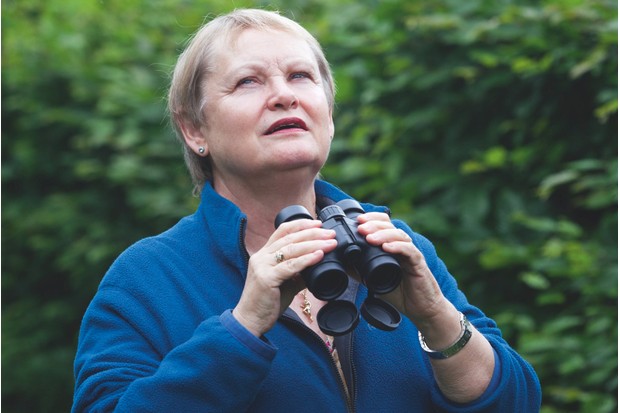Impressive numbers of moths in the Stade de France provided light relief during a pretty dull finale to Euro 2016. “The moths were great but the football was lousy,” agrees Richard Fox, an expert at Butterfly Conservation.
One moth even landed on the face of stricken Portuguese superstar Cristiano Ronaldo – a gift for headline writers around the world. But what were the moths, and why were so many of them in central Paris?
“These were silver Y moths,” says Fox. “They are a migratory species, just like swallows, and they move north through the continent in large numbers in spring and summer as the weather warms. Then they fly south again to winter in warmer areas.”
It is a multi-generational migration, as with painted lady butterflies in Europe and monarch butterflies in North America. “The adult moths move north in spring, then stop to breed,” explains Fox. “Then when their caterpillars have grown up and developed into moths, they continue the journey north, before it is their turn to stop and breed, and so on. It’s a bit like a relay race.”
‘There is obviously a mass movement of silver Y moths going on in France at the moment,” Fox adds. “They would have been attracted to the stadium lights – like a massive moth trap.”
Here in Britain sightings of silver Y moths have been on the increase since early July. The migratory species is a common summer and autumn visitor to gardens and the countryside, and will even – as the Portugal–France match demonstrates – flock to city centres. The moths are often disturbed by day from their resting place among grass or vegetation.
The silver Y moth is also one of the species included in the Big Butterfly Count, organised by Butterfly Conservation. In 2016 this annual citizen-science event runs from 15 July to 7 August.
“Given the big numbers of silver Ys seen recently in France, it will be fascinating to see how many of the moths are reported in Britain during the count,” Fox says. “They may well be crossing the Channel any time now.”
7 more of the best wildlife pitch invasions
Euro Group A qualifier, Helsinki, 2007
Owl’s that! A giant owl – the world’s largest – photobombed the pitch during a match between Finland and Belgium.
Mallard, Wimbledon 2007
A female mallard and her four fluffy ducklings paraded across an outside court.
Speckled pigeon, FIFA World Cup, South Africa, 2010
Wags said the bird was the highlight of a woeful first half in the Algeria-England match.
Red fox, Six Nations Rugby, Twickenham, 2011
Just before kick-off in the England-Scotland showdown, a cheeky fox decided to check out the condition of the pitch.
Black swan, Australian Open Golf Tournament, 2011
A pair of swans that strolled onto the green provided plenty of opportunity for gags about ‘birdies’.
Long-tailed langur, England cricket tour of India, 2012
Monkey pitch invasions are not unheard of in India and Sri Lanka. In this case, a langur interrupted play between Haryana and England at the Sardar Patel Stadium.
Beech marten, Swiss Super League, Switzerland, 2013
One of these weasel-like mammals stopped play between FC Zurich and FC Thun. It was widely (and wrongly) reported to be a pine marten, a close relative.
Main image: The silver Y moth doesn't normally choose a football pitch as its ideal habitat.
